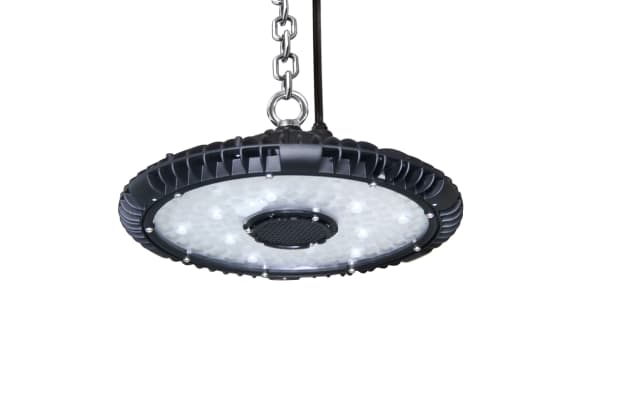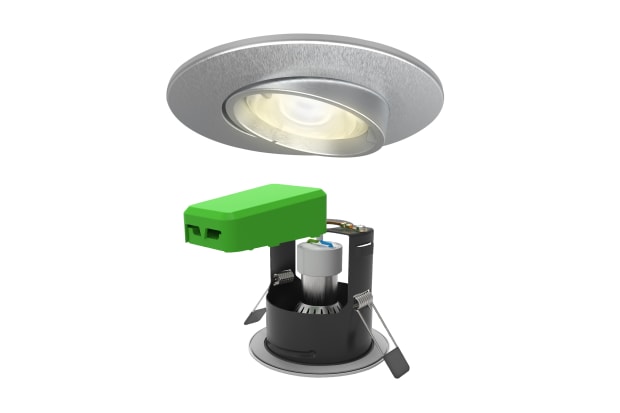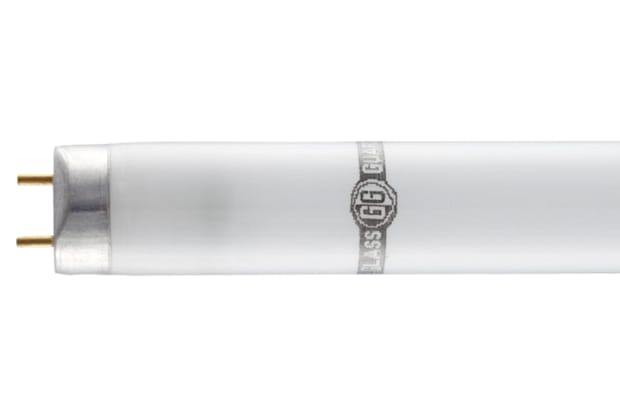- Published 17 Jan 2023
- Last Modified 24 Apr 2024
- 6 min
Lighting in the Workplace
Ensure you have the best lighting for your workplace with our handy industrial lighting guide.

Lighting is a crucial part of any workspace. As well as ensuring the safety of employees, the type of lighting and illuminance is closely linked to workers' health and well-being. As an EHS manager or maintenance engineer, you must provide comfortable and safe lighting in the workplace.
This guide offers plenty of useful information to help you optimise the quality of the commercial or industrial lighting in your business.
Warehouse Lighting

Improving the quality of lighting in your warehouse has a positive impact on the well-being and productivity of staff. Experts identify three sources of light to illuminate a warehouse – halogen, fluorescent, and LED lamps.
To improve visibility in the workplace, the use of LED lamps with high levels of shelving is strongly recommended. Their impact in reducing the risk of accidents and limiting periods of absence from work is well documented. These downtimes take a huge financial toll on companies.
One of the advantages of LED lamps is their low energy consumption. Company managers report average energy savings of 50% on their business electricity bill and, more precisely, on the lighting budget. Some even claim an impressive 80% reduction.
The other advantage of LED lamps is that they are designed for long-term use. According to specialists, they have a service life of at least 20 years. As well as being recyclable, they contain no toxic substances. Fluorescent lamps, on the other hand, contain polluting elements like mercury and cannot be recycled after use.
As you can see, LED technology exponentially multiplies the profitability of a warehouse, making it the perfect lighting solution to introduce across the board.

Spotlight On: High Bay Lighting
Perfect for providing consistently bright light across large, open-plan spaces with high ceilings, high bay lighting is often the go-to choice in warehouses and the manufacturing and distribution sectors. High bay lights can include a wide variety of lamps and fittings and are ideal for areas where the indoor floor-to-ceiling height exceeds eight metres.
You can find out more in our complete guide to high bay lighting.
Office Lighting

Lighting has no less of an impact on comfort in the workplace than the ergonomics, seating, desk, storage, and ventilation. The illuminance, colour and power of the light sources all play a vital part in ensuring full visibility and maximising office workers' concentration.
Bright, high-quality lighting is essential in an office, promising excellent reading comfort and avoiding visual fatigue. Here are some criteria for measuring the quality of your office lighting and its importance, including luminance, uniformity, and colours.
When defining your lighting requirements, think about the work being carried out and the location of the workspaces.
Within the 1974 Health & Safety at Work Act, employers must provide lighting sufficient that work can be safely undertaken. Additionally, it stipulates that an employee’s eyesight or health should not be placed at risk due to insufficient illumination.
More specifically, regulation number eight of the Workplace Regulations Act 1992 states that employers must ensure that:
- The work area has sufficient and suitable lighting
- This should be natural light, where reasonably practical
- Sufficient and suitable emergency lighting shall be provided where needed
Different activities require different lighting levels. In general, the more detailed the task, the greater the light requirement. A process control room should be lit at an illuminance of 300 lux, a corridor or walkway may only require 50 lux, whilst studying an engineering drawing may require 750 lux (see HSG38 Lighting at Work).
Depending on your specifications, you can opt for ceiling lights, desk lamps, wall lights or floor lights. While ceiling lights can illuminate the entire room, desk lamps increase the light intensity on the desk or workspace itself.

Spotlight On: Smart Lighting
Designed with convenience in mind, smart lights send and receive signals wirelessly. This means that smart lights can be controlled remotely wherever there is an internet connection. As well as wireless and Wi-Fi connections, smart lighting can also include lighting controlled by voice, specific apps, and Bluetooth technology.
Smart lighting is available from various leading brands such as 4lite UK.
Laboratory Lighting

When choosing the right lights for your laboratory environment, it helps to know the recommended brightness. As in other sectors, comfort and the work to be carried out are the key factors to be considered in a laboratory.
Buildings standard EN 12464-1 sets out the nomenclature for lighting in laboratories and similar types of building. This standard identifies four main criteria as requirem2021-09-03ents, including respecting the average brightness, setting the UGR (Unified Glare Rating) threshold, standardising the lighting to maintain the same brightness in every corner of the lab, and ensuring that colours are applied.

Spotlight On: Shatterproof Lighting
Shatterproof lighting is designed for resistance to shattering, either through impact or internal pressure. It is often preferred for safety reasons. Shatterproof lamps are commonly used in the food and beverage industry to meet food safety standards and prevent glass contamination.
We stock GlassGuard fluorescent tubes which are industry-compliant with fragment retention technology.
Workshop Lighting
The choice of lighting in your workshop must be based on industrial designs. There is a variety available on the market, but trends show that many buyers are leaning towards industrial lighting with LED technology.
An industrial LED lamp has a 40-mm diameter base. These extremely powerful lamps are recommended for illuminating large spaces. Their illuminance varies between 80 and 160 watts for a light intensity of between 8000 and 16,000 lumens, which is extremely high. The amplitude of the lighting angle of an LED lamp is 120°, providing full visibility across the workshop.
A pendant light fitting to hold the lamp is a recommended add-on for industrial lighting. This type of accessory is also a popular visual lighting design, with formats including a rod, cable, or chain.
You can also opt for an LED neon lamp, which offers a special type of lighting. You can get neon LED tube lights that come in lengths of 60cm, 120cm and 150cm. The LED cloche is chosen for its practicality, being easily manoeuvrable with bell-shaped ergonomics. Its shape concentrates the light beam to around 120°.
The updated, modern design of the LED strip light also makes it a unique accessory. Choose stylish flat-design models or neon LEDs ranging from 60cm to 150cm in length. They are mounted in a protective sleeve and offer uniform lighting for small spaces.

Spotlight On: Emergency Lighting
Emergency lighting is vital for safety reasons. It is used in commercial and industrial spaces to keep employees and members of the public safe, illuminating the area and indicating the location of emergency exits.
For more information about emergency lighting legislation, testing, and more, you can visit our safety and emergency lighting guide.
Activity Light Levels
The table below explains the average and minimum illuminance requirements for various common activities, locations, and places of work.
Activity | Location/s | Average Illuminance (Lux) 1x | Minimum Measured Illuminance (Lux) 1x |
|---|---|---|---|
| Movement of people, vehicles, and machinery | Corridors, circulation routers, lorry parks | 20 | 5 |
| Movement of people, vehicles, and machinery in hazardous areas; rough work not requiring any perception of detail | Construction site clearance, excavation work, loading bays, bottling and canning plants | 50 | 20 |
| Work requiring a limited perception of detail | Kitchens, potteries, factories assembling large components | 100 | 50 |
| Working requiring perception of detail | Office work, bookbinding, sheet metal work | 200 | 100 |
| Working requiring perception of fine detail | Textile production, drawing offices, factories assembling electronic components | 500 | 200 |
Industrial Lighting: Key Points
Ensuring you have the appropriate level and quality of illumination in the workplace isn’t simply about seeing what you’re doing. There are other tangible benefits to ensuring that all lighting is suitable for the workspace where it's being used:
- Poor quality lighting can present health risks, even as simple as eye strain and headaches. With the health and safety of employees never off the agenda, improving the quality of lighting should be a priority
- Productivity can be maximised by providing suitable lighting for the workspace, avoiding mistakes and keeping staff as comfortable as possible
- Saving energy by continually reviewing your lighting and considering upgrades that use the latest lighting technology
- Avoid failures and potential downtime by switching to LED options with a longer operational lifespan
Where to Next?
Related links
- Switching to Efficient Industrial Lighting
- Fire Safety in the Workplace
- Selecting the Best Work Overalls for the Job
- Top 13 Tools for the Best Electricians Tool Kit
- Hard Hat Chin Straps
- Everything You Need to Know About Label Printers
- A Complete Guide to Industrial Electrical Safety
- A Practical Guide to First Aid in the Workplace

